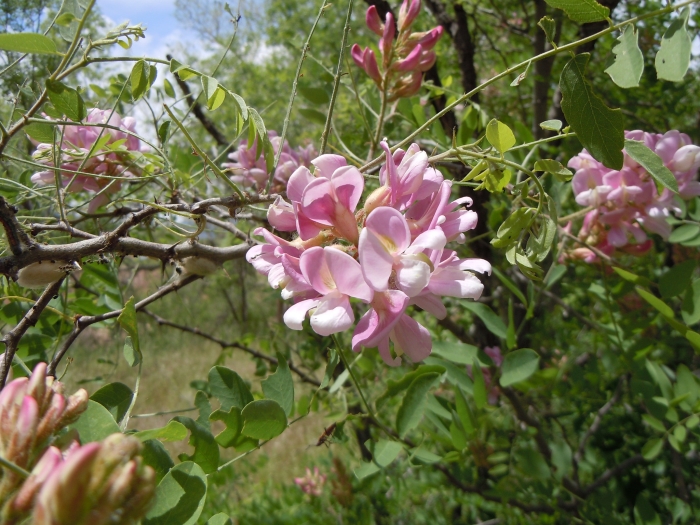New Mexico Locust
(Robinia neomexicana)
New Mexico Locust (Robinia neomexicana)
/
/

Matt Lavin
CC BY-SA 2.0






















































Estimated Native Range
Summary
The plant is notable for its showy, fragrant flowers that are white or pink, blooming in spring or early summer. The blooms form in dense racemes 5–10 cm long that dangle elegantly from the branches. Following flowering, it produces brown, bean-like seed pods that are also bristly. The New Mexico Locust is valued for its ornamental flowers and ability to fix nitrogen in the soil, enhancing fertility. It is used for reclamation projects, naturalistic plantings, and as a feature in xeriscapes due to its drought tolerance. This species prefers full sun but can tolerate partial shade and is adaptable to a range of soil types, from well-drained to clay, provided they are not waterlogged. While generally low-maintenance, it can be susceptible to locust borer and leaf miner infestations. Additionally, it may spread aggressively by suckers if not managed, which should be considered when planting in garden settings.CC BY-SA 4.0
Plant Description
- Plant Type: Tree, Shrub
- Height: 10-20 feet
- Width: 10-15 feet
- Growth Rate: Rapid
- Flower Color: Pink
- Flowering Season: Spring
- Leaf Retention: Deciduous
Growth Requirements
- Sun: Full Sun
- Water: Medium
- Drainage: Fast, Medium
Common Uses
Bank Stabilization, Bee Garden, Bird Garden, Butterfly Garden, Drought Tolerant, Edible*Disclaimer: Easyscape's listed plant edibility is for informational use. Always verify the safety and proper identification of any plant before consumption., Erosion Control, Fire Resistant, Fragrant, Hummingbird Garden, Low Maintenance, Showy Flowers
Natural Habitat
native to the Southwestern United States and Mexico, particularly found in mountainous regions, canyons, and alongside streams within pine and mixed conifer forests
Other Names
Common Names: Desert Locust, Southwestern Locust, New Mexico Honey Locust, Rose Locust, Rusby’s Locust, Robinier Du Nouveau-Mexique, Robiniya Novomeksikanskaya, Uña De Gato, Robinia
Scientific Names: , Robinia neomexicana,
GBIF Accepted Name: Robinia neomexicana A.Gray